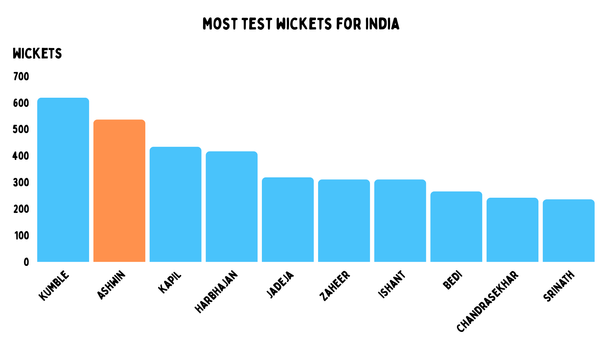Jimmy Anderson's 40037 ball spell

This is the entire history of seam bowlers who have taken wickets over the age of 40. It’s a wild ride.

Johnny Douglas is famous for being really fit, like abnormally so for a cricketer. He was an allrounder who took 1893 wickets in first-class cricket. Sadly, he passed away trying to save his father’s life.
Tom Emmett was one of the first left-arm pace bowlers. Except when he got older, he was a spinner, so that doesn’t count. He did invent a delivery that he called sostenuter, which sounds awesome.
Hines Johnson was a fast bowler from the West Indies. He only played 28 first-class games, but at the age of 37, he was the first quick from the Caribbean to take ten wickets in a match. He played one Test a few days after turning forty.
Les Jackson played two Tests, one in his early 30s and one as a last-minute replacement when he was past 40. Without an injury, he would not be on this list.
George Geary was a swing and seam stock bowler who liked to bowl all day if someone allowed him to. In 1929, he took 5/105 from 81 overs in a single innings. After turning 40, he took 4 wickets – one of them was Don Bradman.
Dave Nourse was a batter, but he bowled part-time seam when needed because everyone in South Africa is an allrounder.
Gubby Allen took the most wickets in the Bodyline series for England, but he refused to deliver bodyline bowling. 18 years after his debut, he captained England in the West Indies when he was in his 40s. The working class Harold Larwood would have never gotten this treatment.
Tip Snooke was a great allrounder for early South African teams. He made his first-class debut when 17, and was still bowling his seam in Tests into his 40s. In his final match, he took 3/17 and 2/41.
Basil D’Oliveira was a batter with handy medium pace. He was listed as in his early 40s, but was perhaps in his late 40s by the end of his career. He was famous for other things than bowling seam when old.
Nigel Haig was an allrounder from Eton who was part of a weak England side that played in the West Indies. At the same time, they had another team playing in New Zealand.
Lala Amarnath was a batter who basically ran Indian cricket for generations after being sent home from a tour for fighting with a buffoon. He wasn't much of a bowler, but he actually once dismissed Hutton, Washbrook, Compton and Hammond with the new ball. "After a shuffling run of only three paces, he bowled off the wrong foot," said Wisden. He was a seam bowler from three paces who bowled off the wrong foot in his 40s. Legend.
Oh, and Graham Gooch bowled seam, which will never not being funny to me. Him coming in like an eager club cricket bowler who almost runs faster than he bowls is perfection.
As you can see, the story of the seamers to take wickets over the age of 40 is wild. And we haven’t talked about Jimmy Anderson yet. He bowled 40037 balls in Tests, and if it were up to him, he’d have gone for 50K.
There is an argument about Jimmy Anderson’s greatness that has been going on since 2011. It involves the 'Clouderson' nickname and how his bowling average was never that low. Not to mention, being compared to Dale Steyn. But while the South African’s peaks were better, Anderson has 250 more wickets.

It’s easy to say that he was lucky to be in England when they were this professional. But there aren’t any other seamers with 700 wickets in history.
Anderson was at the right place, at the right time, but the ability to take as many wickets as he has for this long is all him.

If you think you’ve seen him bowl a lot, let me put it this way: Since his debut, he’s bowled four percent of all seam deliveries in Tests. So, for every 25 balls of seam, one is his. That is an awful lot of Jimmy Anderson.

But we can take this further. Jimmy Anderson has bowled over 40037 deliveries since his debut in Tests, while all the left-arm wrist spinners combined have 10333. Watching Test cricket over the last couple of decades, you see four balls from him for every one of the left-arm wrist spinners. Jimmy Anderson has outbowled an entire species of bowlers.

Just think about how many steps he had to make on each Test. I have him as roughly 700 km of running just up to the crease.
Supposing Jimmy Anderson's run-up is about 19 yards, and he's bowled 40,002 deliveries in Tests...
— Henry Moeran (@henrymoeranBBC) July 12, 2024
Well that's 760,038 yards, or 430 miles.
Which is, by chance, the distance on foot to walk from the Utilita Bowl to Chester-le-Street via every Test venue in England. pic.twitter.com/E2Rk64FDkR
Jimmy Anderson played his first in May 2003. The website MySpace was the first globally popular social media platform; it started in August of that year. How ancient is Jimmy Anderson? His career is older than the thing that now defines so much of modern life.

That first chapter of Anderson was when England had a raw talent that they almost ruined by changing to change his action (almost breaking him) and was better at white ball cricket. That seems like a different lifetime ago now. He could swing the ball massively, but he wasn’t always in control of it as it seemed to move too far, even for him.

But from 2008, he takes over as the main bowler in the attack as Matthew Hoggard and Steve Harmison are moved aside. England become the world’s number-one team for a few years after that.
Something more important happens at that stage: He discovers the wobbleball from Mohammad Asif and Stuart Clarke and learns everything he can about it. So even though he’s now in his 30s and should be wrapping up, he’s better than ever.

By 2014, he’s clearly a different bowler. It takes the world about four years to catch on to what he is doing. And all that does is mean other bowlers are taking wickets; it doesn’t slow Jimmy down. But he had a hell of a headstart because he was the one who took this trend to an entirely different level.

Now we’ve had a couple of seamers play on until they were old before. Courtney Walsh is probably still bowling in first-class cricket somewhere. But the interesting thing about Anderson is that his peak was so late. But also when looking at McGrath, Anderson, Walsh and Hadlee, you see that Anderson starts before them and finishes after.

And do you know how hard it is to make it as a purely seamer in your 40s? We’re not talking about allrounders, batters who bowl a little, or seamers who became spinners. That is almost impossible for someone whose only job is to run in and deliver seam bowling.
So, let’s remove all them batters, allrounders and blokes who became spinners and look at just the quicks. This now suggests that Anderson took a little less than a third of the specialist seam wickets over the age of 40.

But there is one player with more. This is Sydney Barnes, who is probably the greatest bowler who ever played for England, certainly if we just look at bowling averages. Barnes had other issues, though, such as the fact that he wouldn’t always play. He even refused to be involved in County cricket and didn’t actually take that many wickets at Test level either.
The conversation between Barnes and Anderson is weird because Anderson took 700 wickets, and Barnes did not. Those who love counting stats and modern players will go with Anderson, and those who love averages over everything else will lean towards Barnes.

It is worth remembering that Barnes played league cricket so that he didn’t have to bowl every day. Anderson was withdrawn from ODIs and first-class to have more energy for Tests. So the real trick for 40-year-old bowlers is to do less work in their 30s.
The truth is that Anderson’s sheer weight of wickets will keep him in any conversation, but there will always be someone questioning his average.
But there is one other thing worth remembering here. Barnes considered himself a spinner, not a seamer. At the very least, he was a mixture and not a traditional pacer.
If you take him out, there is no doubt that Anderson is the greatest seam-bowling specialist wicket-taker of all time over the age of 40. He has almost almost 50% of the wickets.

Where he fits in beyond that depends on your taste. Fred Trueman took 300 wickets at 21, and we don’t talk about him much anymore. Dale Steyn was a great but never got the access to the professionalism or matches that Anderson did. Name any one of the great West Indian seamers here as well. But you can’t deny the effort, skill, and – most importantly – will that got Anderson to these many wickets.

That he survived 40037 Test deliveries is mind-blowing, and that he thrived was incomprehensible.



